A boom in technology is appreciated, but not at the expense of destroying plantations and green spaces that are home to various ethnic tribes and animals. For example, the Mursi tribe . The most dangerous tribes in Ethiopia living in the valleys of the lower OMO rivers feel worried. They fear the construction of the Gibe III hydropower project and a lot of deforestation. The tribe existed to stay there for over a century, accustomed to the harsh environment. In addition, losing their livelihoods and starting over in a suburban area have made them feel broken.
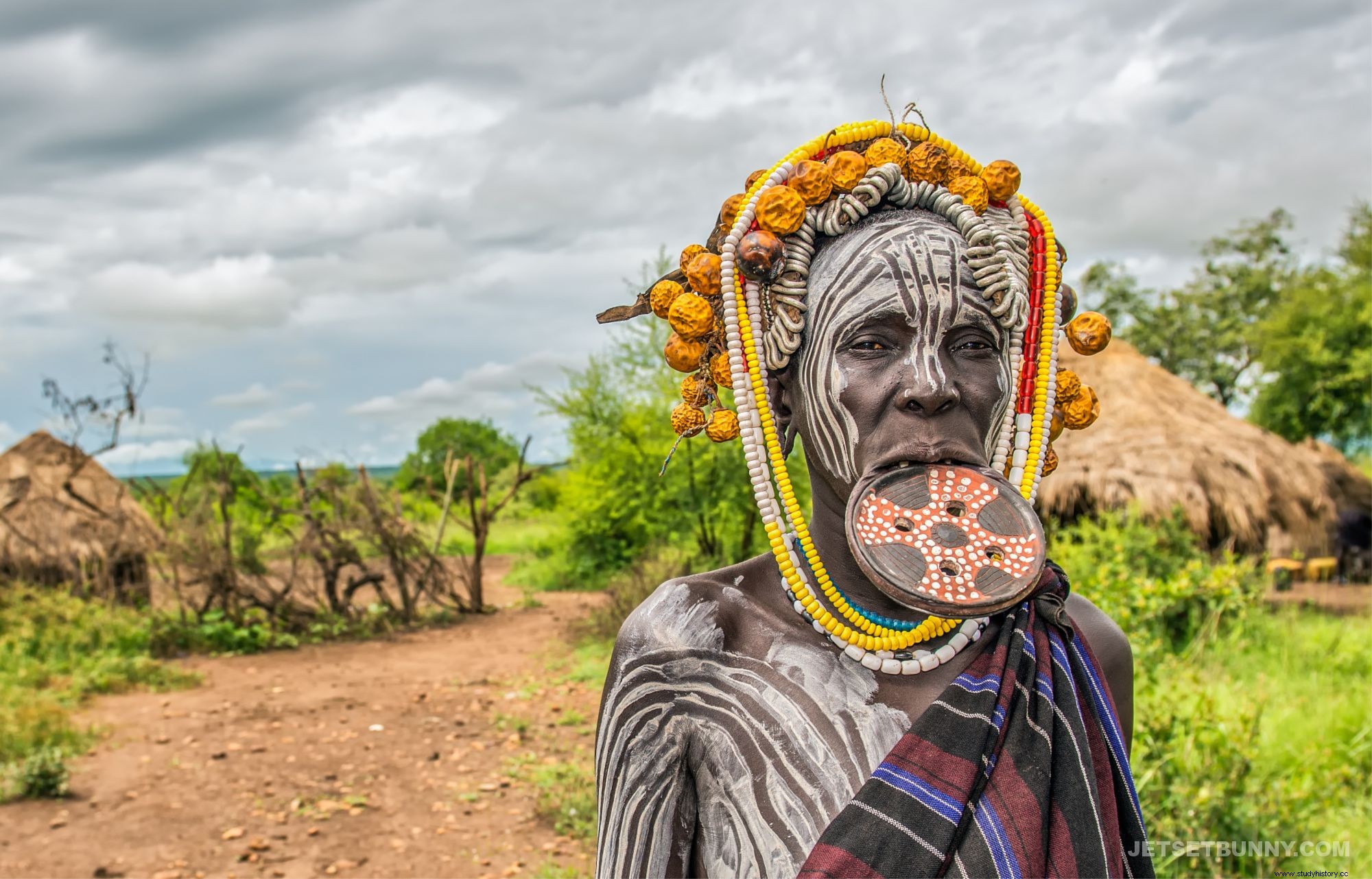
Where does the Mursi tribe live?
In the lower OMO Valley of Ethiopia, the indigenous Mursi tribe can be found. They have lived together for centuries. Similarly, other tribes have also spent centuries of life there. To find the exact position to find the Mursi people in Ethiopia, the territory is bounded on the west by Sudan and the Mango River on the east. In addition, the OMO Wenz River on the south and north mountains of Nayalibong Korea. The height of Nayalibong Korebta mountain is 1611 meters, also the western front of Mursis territory. The mountains are not preferred, however, but for easy access to food and water, Mursi's preference is the large African Rift Valley.
To the southeastern corner of Ethiopia lies the Mursi tribe is found. The OMO River forms the northern border with Kenya. In the remote OMO valley, paleontologists have discovered the remains of the bodies of ancient humans living on earth as well as those from the tribes that exist even today.
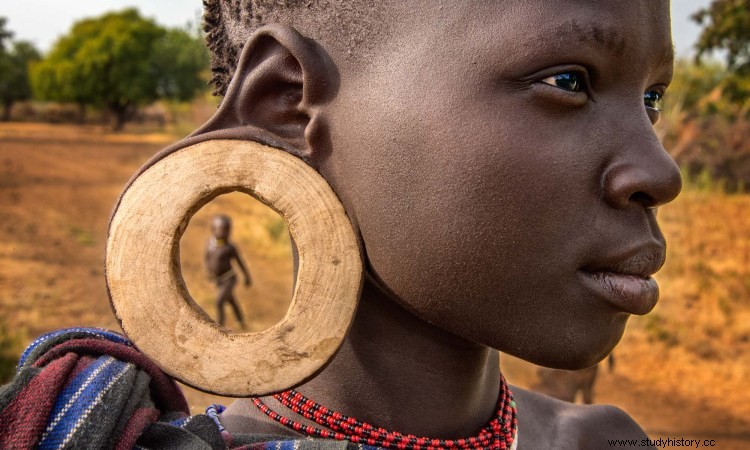
About the Mursi tribe
The Mursi tribes has set up a developed management system for limited crop consumption. As far as history goes, Sorghum is the main diet for the Mursi people. The tribe feeds on domestic animals themselves. Why Sorghum? Because it has better heat-carrying capacity. As well as remain usable for a long time. The mortars make porridge from them after being ground and boiled in wood.
In addition to beans, chickpeas and millet are also used by Mursi as crops. A recent survey estimates that the tribe has around 10,000 XNUMX members. The language belonging to the Nile-Sahara people is used by the Mursi tribe. However, the bad practices of the outside world, such as alcohol, greed and envy, greatly corrupted the warriors. The warriors get drunk. It reflects resentment even behind their smile.
Tumwi, the eternal power of heaven, is considered the most powerful of men. Shaman or
Komoru is the central figure that governs the village. The Mursis strongly believe that shamans enable communication between Tumwi and villagers. Hence the Mursi tribe think the presence of komoru would be beneficial to their village or anywhere on Mursi land.
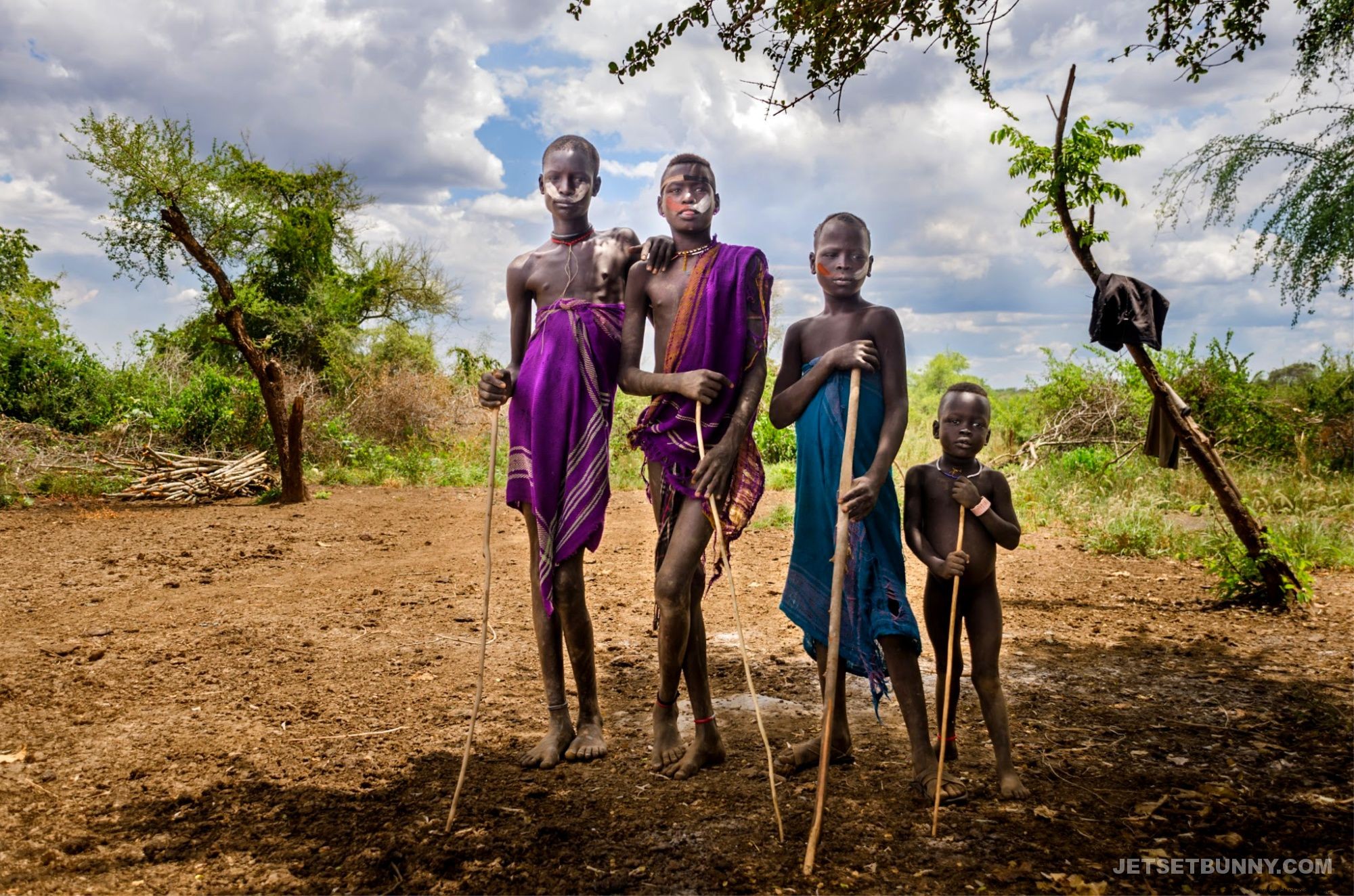
Mursi tribe age
During the reign of Emperor Menelik in the 19th century, Ethiopia also united the land of Mursi. The Mursi tribe was formed 150 or 200 years ago. In addition, different nomadic races were involved in building the group. Today is the Mursi tribe has gained immense popularity due to its valuable traditional customs.
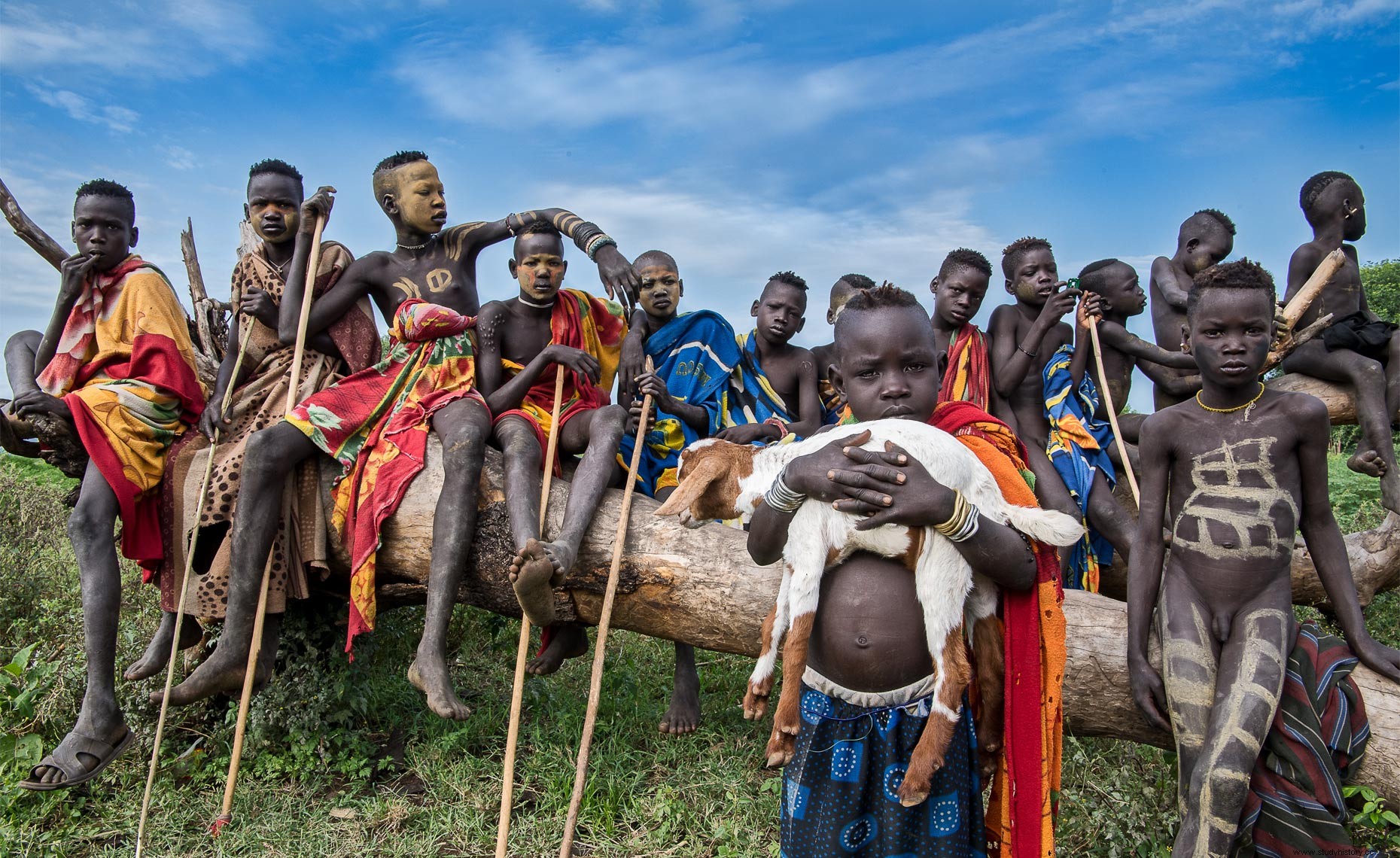
The customs of the Mursi Tribe Women
To test perfection, for marriage and fertility, it is a custom for women to insert decorated plates of different sizes into the lower lips. It would be difficult to confirm when the custom began, but it began as expected in antiquity when the slave trade became popular. Consequently, Mursi took action to protect her women by making them look ugly. Therefore, the tradition of piercing the lower lips was introduced in the Mursi strain .
Method used
The custom is widespread among women who have reached puberty between the ages of fifteen and sixteen. Another woman from her clan cuts her lower lip. Then put wooden sticks in place. Furthermore, the number of pins is increased. Every night, the woman continues to repeat the process of stretching her lip to fit the plate.
The boards are made of clay or wood. Usually single or married women of the Mursi tribe has the lower lip stretched lips with a radius of up to twelve centimeters. Newlyweds and single ladies mostly use the dishes while serving food to guests, wedding events, attending festivals such as Donga or dancing. With age, the plates can be removed. The plates have been completely removed for widows.
Reason
Using the size of a lip plate is also related to the dowry system. However, the dowry is not cash, but kind. It is the exchange of a certain number of cattle, cattle symbolize wealth. According to the general belief, in the Mursi tribe, there were women without plate in the lips must be lazy and will fetch less wealth. However, those with larger plates would be brave and persevering. In addition, they will gain a greater amount of wealth.
Benefit
This unusual custom of using lipstick has attracted visitors a lot. Contributions from visitors have benefited the tribes to maintain a livelihood. It is also a source of income.
Modern Age
Advances in the modern world have influenced the view of ancient customs. It is highly doubtful whether the custom will continue or not. Not just the government, but the women of the Mursi tribe feel that the custom of lip discs is dated. Some visitors think so too. Some believe it is an ancient heritage that Mursi practices to differentiate itself from other tribes.

The tradition of the Mursi tribe Men
The Omo Valley is known as a dry region. High temperatures, combined with little rainfall and drought are common. As a protection against the harsh climate outside, clay paintings are applied to men's bodies. The body paint contains clay and minerals that come from the earth. Not only sun protection, but the limestone content acts as an insect repellent. Therefore, the tradition of body painting among men became important. Various designs and impressive works of art are displayed. Since the mirrors are not available, the members of the Mursi tribe will men take the help of others to apply the paint.
For the most part, it is men from tribal families who take care of the cattle herds. The greater the conception, the greater her herd wealth. Also, if a father has an unmarried daughter, he must be extra careful to secure dowry claims. In addition to milk and meat resources, cattle were also used for trade. In case of emergency, the cattle can be exchanged for food crops.
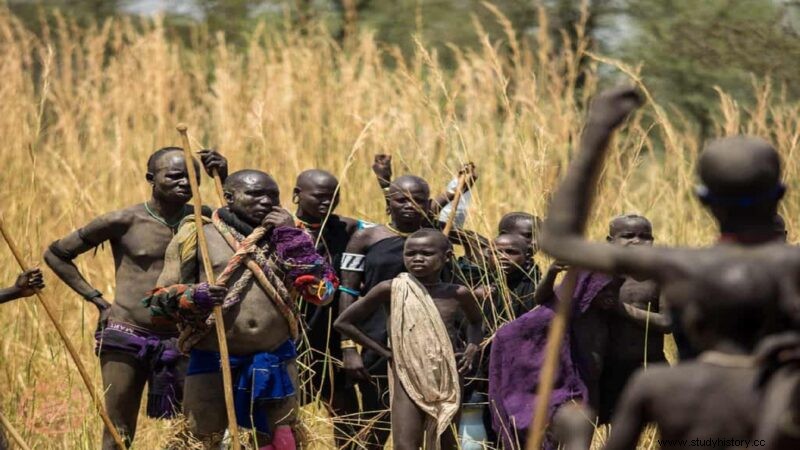
Dressing the Mursi Tribe
Traditionally, goatskin was preferred for dressing Mursis. But modernization has greatly affected the Mursi tribe . The introduction of cotton has led to the production of designer garments for the inhabitants of Mursi. Both civilian and Mursi fighters can be seen using colorful fabric around the hips. However, women have stuck to goatskin in the past.
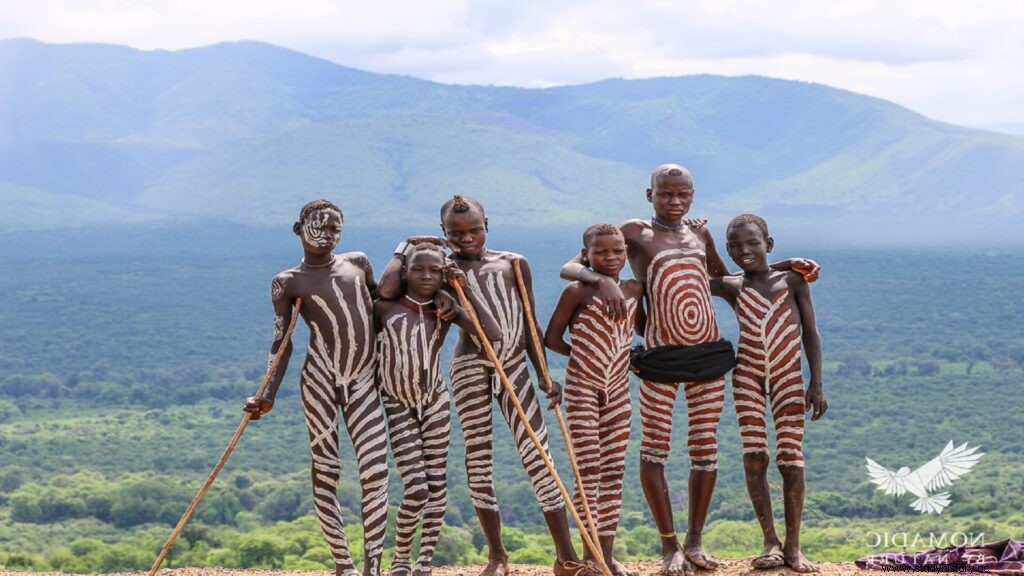
Donga Festival of the Mursi Tribe
Donga is a form of duel ceremony. Furthermore, it is a platform where young Mursi men can show their dignity to their future wives. Umoga is a duel set that the competitors get. In addition to being decorative, the rail protectors are made of leopard skin that hangs from the torso of the challengers. Cotton headgear is usually offered. Furthermore, cattle bells are tied to the waist. The duel involves wooden sticks that are almost two meters long. The stick fight continues until the opponent is defeated.
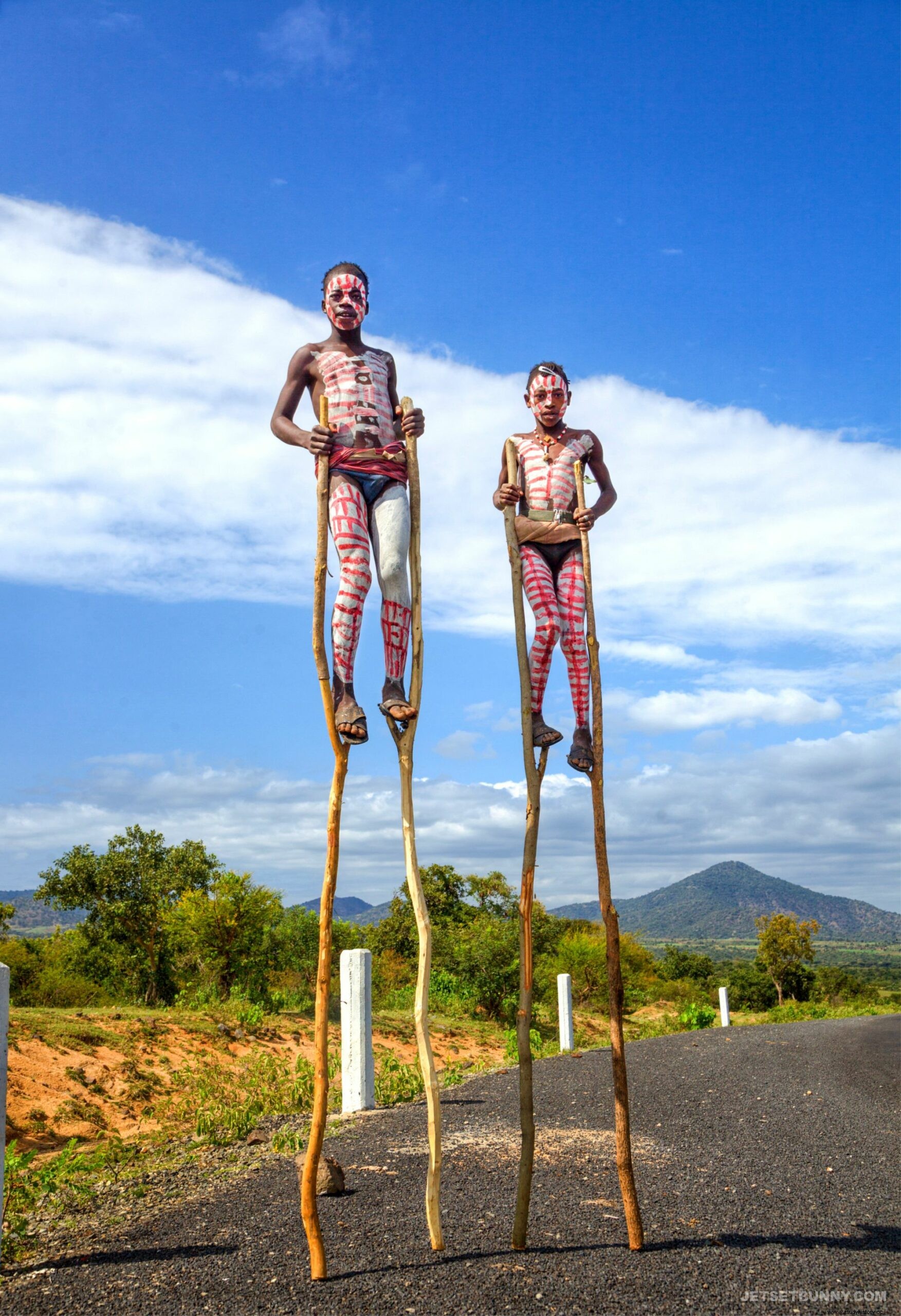
The future of the Mursi tribe
Approximately 200,000 XNUMX tribes, including the Mursi tribe, lives in southwestern Ethiopia ie besides the lower OMO river valley. Furthermore, seven more strains can be accounted for. However, the Gibe III hydropower plant was built by the Italians in 2006. In this project, a huge number of plantations have been destroyed. The tribes in this area have been forced to leave their place. Plans for Gibe IV and V are under consideration. The livelihoods and dependence on the river and its annual floods will be severely affected.
Bank issue
In 2010, following a preliminary study by Gibe III, the African Development Bank and European investment banks refused to finance Gibe III. But the Chinese Industrial and Commercial Bank was interested in sponsoring part of the Gibes III project. In addition, the laying of power lines from the dam is financed by the World Bank.
Consequence
The Omo valley is dry, living tribes have a rustic life here. The river water was the source of irrigation of plantations. In addition, livelihood resources have been affected. The long canals divert the running water in the OMO river. Researchers, various national or international organizations and hydrologists expect a major disaster in the region.

Tribal's life in Omo Valley
The great variety in the ecosystem has made the OMO valley a spectacular place. The valley consists of one of the few "clock" forests with wildlife. Furthermore, the valley contains volcanoes and grasslands. The main part of the livelihood of the tribes is possible due to annual flood cycles on Omo. These annual floods in Omo were a source of biodiversity, and a year-long livelihood, as well as food supply, could be secured. Cultivation was based on the flood right process. Silt left on the banks of the river after the flood subsided was fertile enough to grow the crop.
Like the Mursi tribe , breeding of sheep, goats, chickens and cattle herds was crucial. Special maintenance of cattle including matrimonial property. Therefore, cattle breeding was also most common among the other strains.
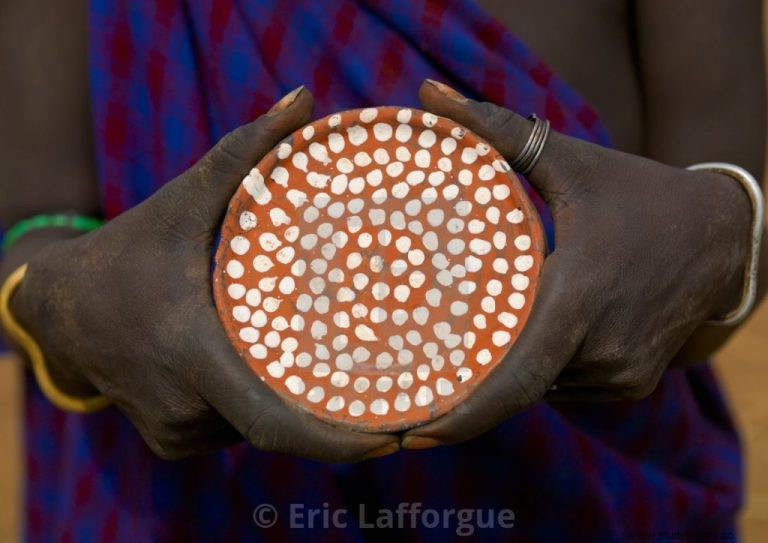
Kuraz Sugar Project and its impact on the Mursi tribe
The Italian, Malaysian, Korean and Indian companies were leased by the Ethiopian government in 2011. In addition, these areas were dedicated to the cultivation of cash crops such as jatropha, cotton, corn and palm oil. The Mursi tribes along with others like Kewgu and Bodis were thrown out to resettlement areas. An assessment of the growing Kuraz Sugar Project from 150,000 245,000 hectares up to XNUMX XNUMX hectares that needed more vacant land. As a result, enormous destruction was carried out in most places that were fit for subsistence.

Complaints of the Mursi tribe
There were several concerns that Mursi and other tribal groups had.
- The Mursi tribe and others had lived for centuries in these areas of lower Omo. Over time, they have developed techniques for surviving challenging situations.
- They were derived from the decision-making process before the dam was built.
- They lost their livelihood and needed government assistance to live.
- Then, with the reduction of land and resources, the peaceful coexistence with other tribes such as Suri, Hamar and Tarkuna was disturbed. The hostilities between the tribes have increased. Each tribe began to fight for its rights.
- In the name of evacuation, much property was destroyed by the military. Including rape and murder
- Battle is an important resource for the tribe and was only allowed a few at resettlement areas
- Permitted national parks in the 1970s and 1980s
- Could not control their country. They were excluded from resource management.
- There was no protest against the government leasing fertile land to foreign companies. They used them for cattle grazing and cultivation at one time.
- Full consultation was guaranteed by the Ethiopian Commission, but it was not properly
- Researchers were there in the lower valley of the OMO to estimate the human rights of the tribes, but they were in vain and no actions materialized afterwards.
- Low reading skills prevented the Mursi tribe from understanding and expressing their discomfort.
- Food and aid promised by the Ethiopian government were in fact not fulfilled
- They knew nothing about the dam. This fact was revealed by a USAID official who visited the lower OMO valley in 2009 to analyze the effect of the dam.
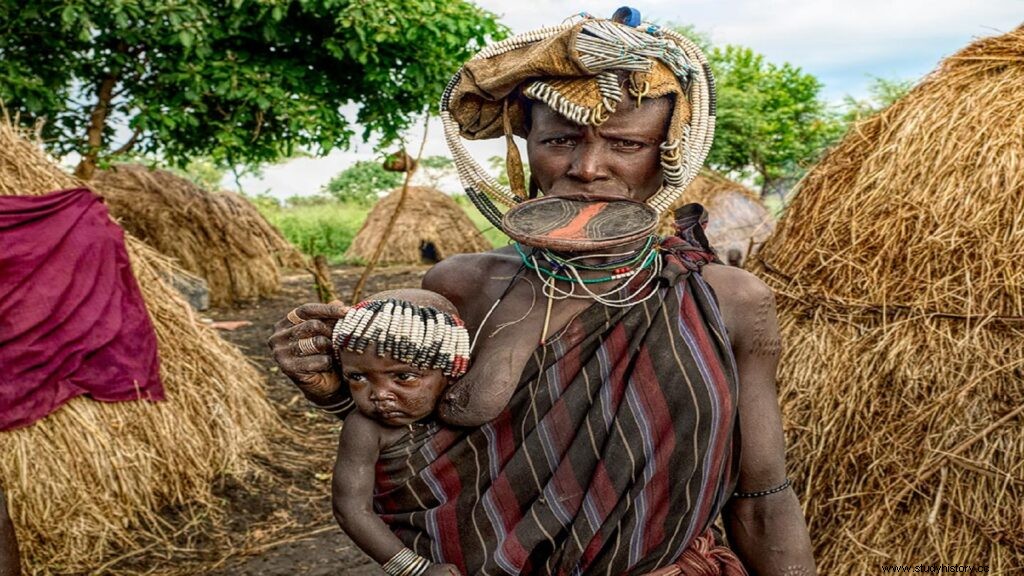
About Gibe III
The largest hydropower dam in Ethiopia is Gibe III. The Ethiopian government signed a treaty with the ITALIAN company Salini Costurri in 2006. However, it was a breach of Ethiopia. The agreement was signed because there was no other competent provider. The Italian engineers began building the dam in 2006 only in 2006. In addition, the Ethiopian government began filling the upstream water in 2015. The construction of the dam put an end to natural floods that used to occur every year and allowed tribal benefits.
There were no artificial floods that year. In 2016, there was a flood, but not much that was enough for the livelihoods of the tribes.
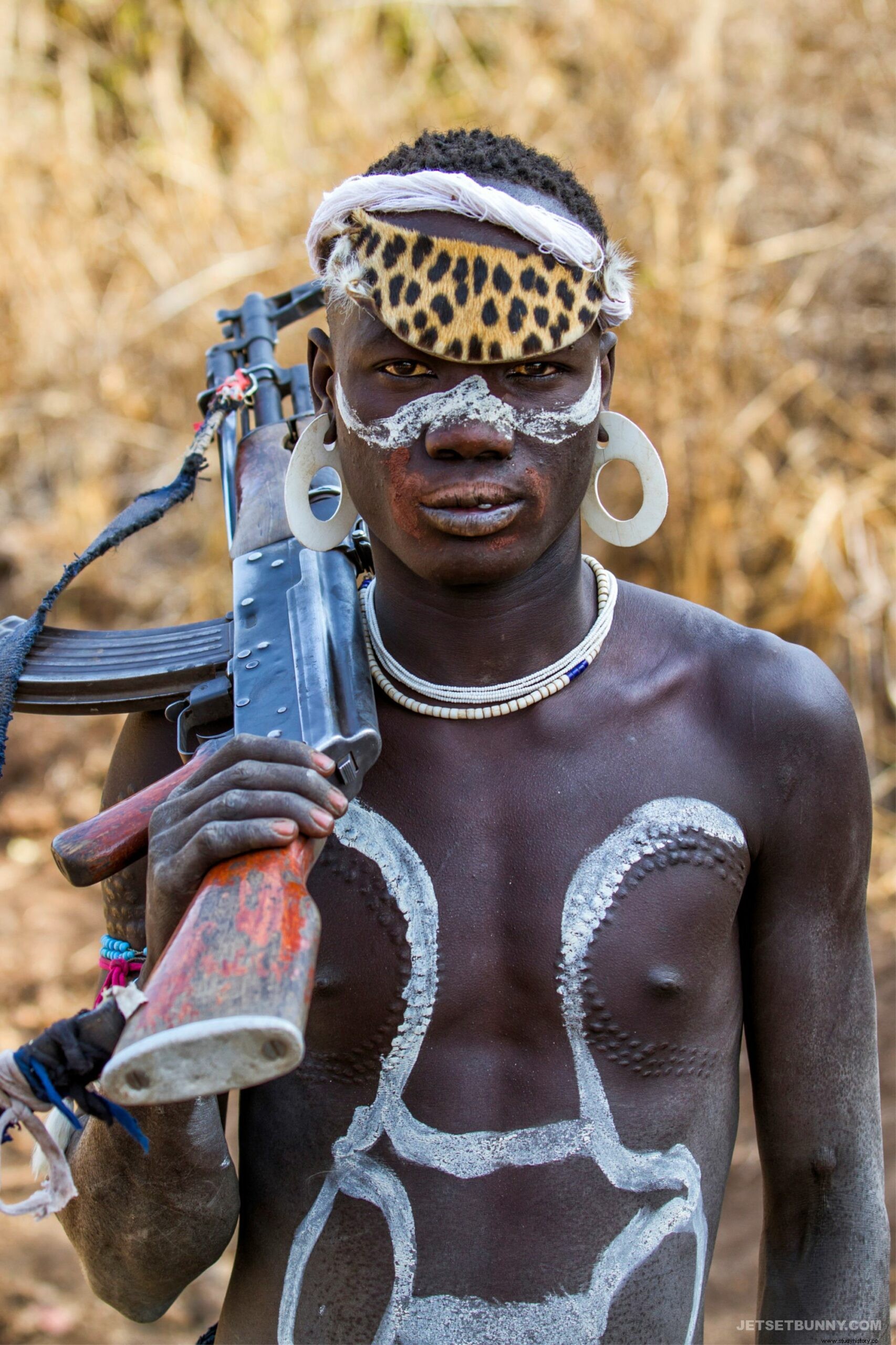
How does it satisfy anthropology?
The Mursi tribes has an ancient origin in Ethiopia. Their presence has gained momentum over the years. This ancient Mursi strain is known for its lip slices worn by women. Although the custom is bizarre, it is a cultural heritage that can be distinguished from other tribal groups. They are inhabitants of an African arid region at risk of drought. The precipitation recorded for eternity is the lowest. Courtesy, the annual flood of the OMO River allow their livelihood. Cattle are an important category of households. They are used for dowry. The decorative clay discs have no origin. However, it may have originated from the days of the slave trade. Sadly, the tribe, along with others in the OMO region, is in trouble. Construction work has created a major shrinkage in their existence. In addition, modernism and rural development reflect a changed tomorrow.

